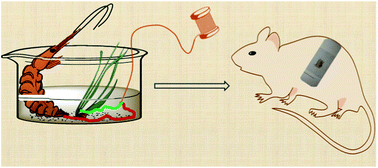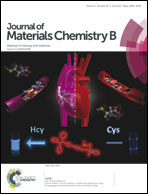Chitin–calcium alginate composite fibers for wound care dressings spun from ionic liquid solution†
Abstract
Chitin–calcium alginate composite fibers were prepared from a solution of high molecular weight chitin extracted from shrimp shells and alginic acid in the ionic liquid 1-ethyl-3-methylimidazolium acetate by dry-jet wet spinning into an aqueous bath saturated with CaCO3. The fibers exhibited a significant proportion of the individual properties of both calcium alginate and chitin. Ultimate stress values were close to values obtained for calcium alginate fibers, and the absorption capacities measured were consistent with those reported for current wound care dressings. Wound healing studies (rat model, histological evaluation) indicated that chitin–calcium alginate covered wound sites underwent normal wound healing with re-epithelialization and that coverage of the dermal fibrosis with hyperplastic epidermis was consistently complete after only 7 days of treatment. Using a single patch per wound per animal during the entire study, all rat wounds achieved 95–99% closure by day 10 with complete wound closure by day 14.


 Please wait while we load your content...
Please wait while we load your content...